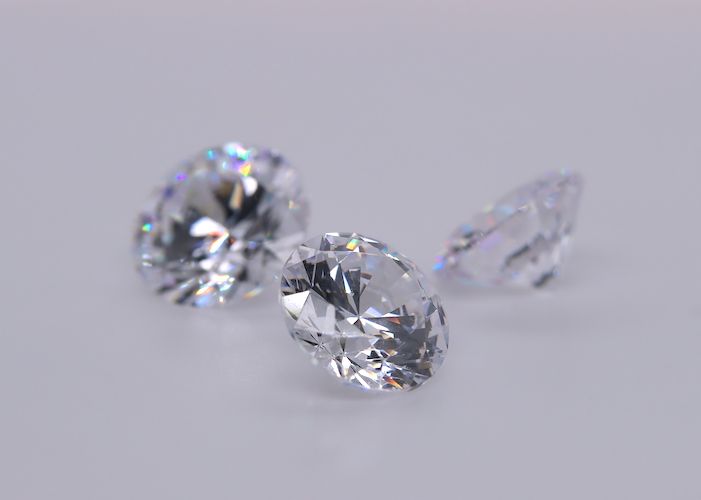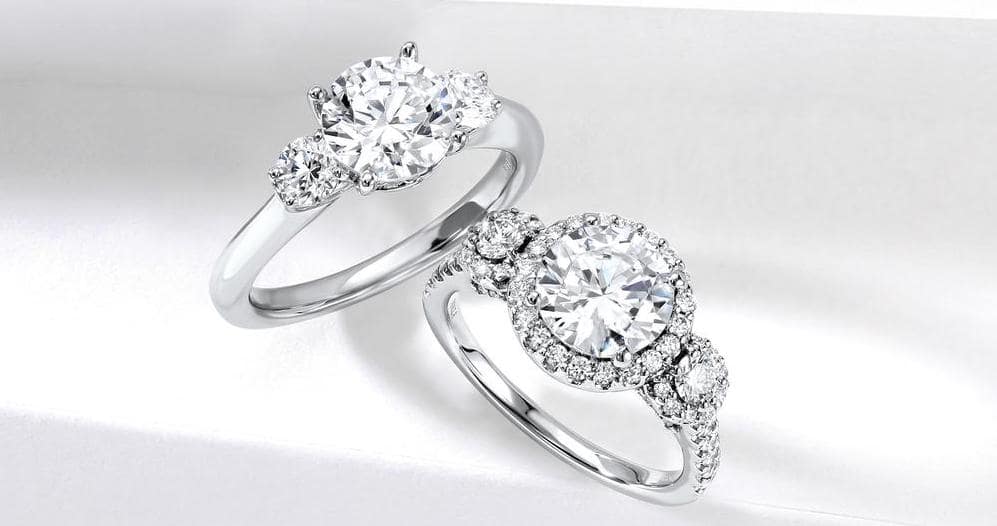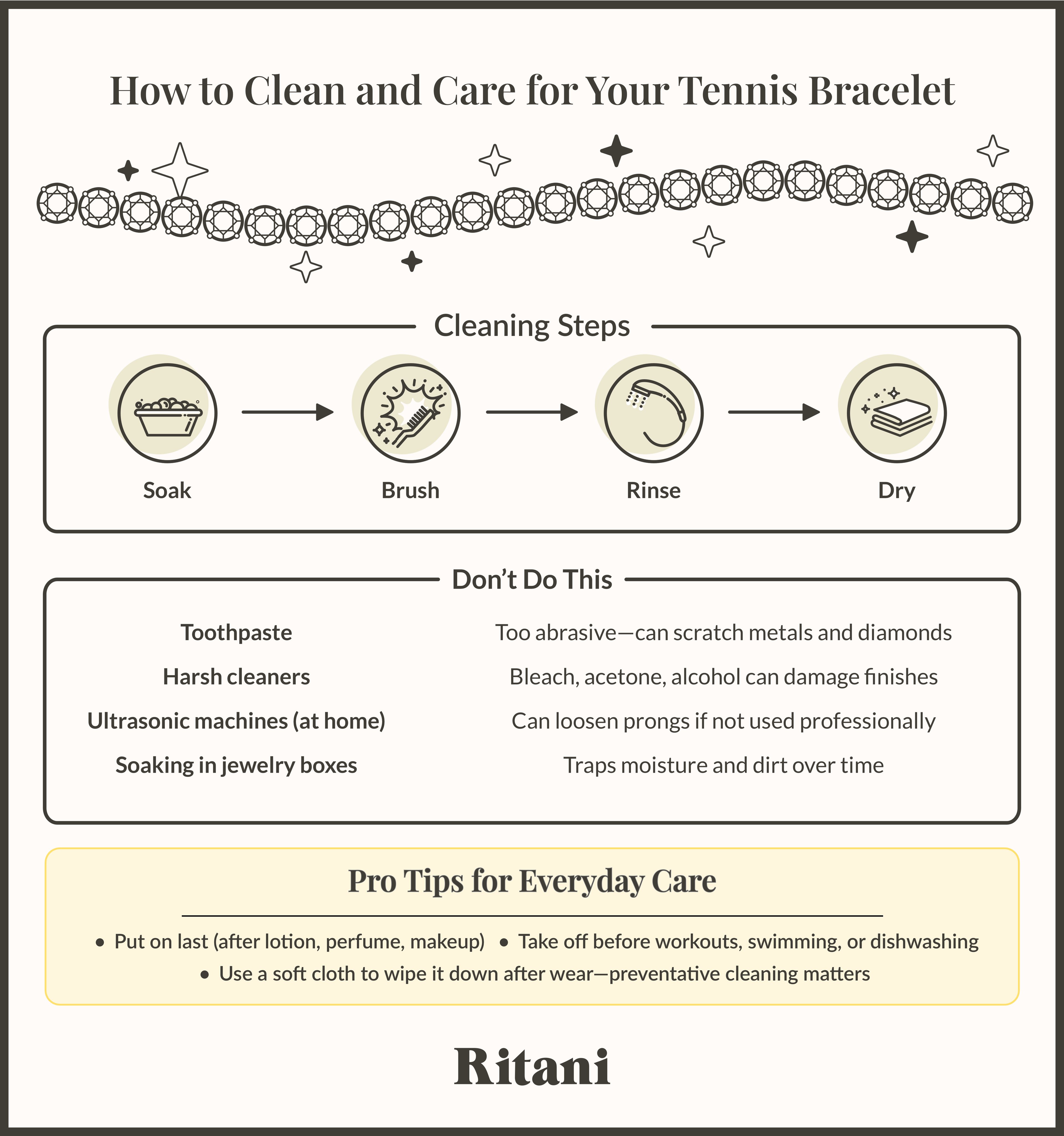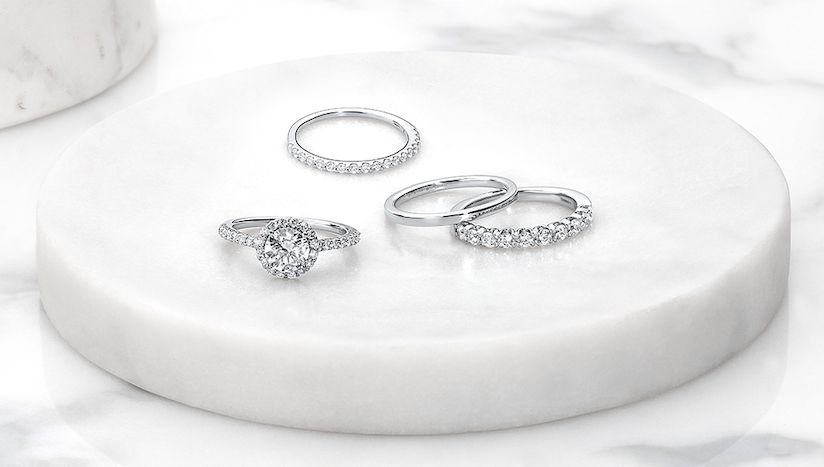What Are Enhanced Diamonds and Gemstones?

Enhanced diamonds are stones that have been altered to improve their appearance. This is occasionally done if the diamond has a poor color or clarity grade. Enhanced diamonds are sometimes called “treated diamonds” or are described as having “post-growth treatment” if their color has been altered. Both mined diamonds and lab-grown diamonds can be enhanced.
Luckily for consumers, vendors legally must disclose if a stone has undergone treatment. Not only is it illegal to not disclose treatment, but it’s unethical. You can turn to your diamond’s grading certificate to see if your stone has been enhanced in any way.

It’s pretty common for lab diamonds created through the CVD process to be enhanced for color. This is because a lot of them have a noticeable brown tint when they are first created, so they undergo treatment to improve their color and make them appear whiter. HPHT lab-grown diamonds are sometimes enhanced as well.
Clarity Enhanced Diamonds
If a diamond has obvious, unattractive flaws, there are a few ways they can be improved. Note that Ritani does not sell clarity-enhanced diamonds.
Fracture Filling
A fracture is an external blemish on the outside of the diamond. Usually irregular in shape, it gives the diamond a chipped appearance.

When a diamond is fracture-filled, it is injected with molted lead glass or a glass-like resin to hide its noticeable fracture. Above, you can see a diamond to the left before it was fracture-filled. The image on the right shows the diamond after it was fracture-filled. The GIA does not certify diamonds that have been received fracture filling.
How to Tell If a Diamond Has Fracture Filling
It can be difficult to tell if a diamond has been fracture-filled. Diamonds that have been enhanced via fracture filling sometimes have small air bubbles where they were filled, which will be visible under a loupe. If a small part of the diamond’s surface looks cloudy or crackled, that’s another sign the stone has been filled.
Some report a “flash effect” in diamonds with fracture filling. This is when flashes of color can be seen in specific spots of the diamond where it was filled. Most report seeing flashes of purple, orange, electric blue, or yellow.
Is Fracture Filling Bad?
Diamonds with fracture filling should be avoided. Fracture filling is not a long-term solution for flaws in a diamond – the filling can deteriorate inside the diamond (especially if the diamond is exposed to certain chemicals) or eventually can create a foggy look inside of the diamond.
It’s common for jewelers to use ultrasonic cleaners to freshen up the look of your diamond jewelry. When a diamond has been fracture-filled, ultrasonic cleaners can ruin the filling. You’ll need to take extra precautions cleaning and maintaining a fracture-filled stone. These are all things you wouldn’t need to worry about with a completely natural diamond. To avoid a diamond that has undergone fracture filling, it’s important to buy from a reputable jeweler like Ritani. At Ritani, we do not carry diamonds that have undergone clarity enhancements.
Laser Drilling
Laser drilling is a technique where an infrared laser beam targets and removes flaws on the inside of the diamond.

The diamond is then placed in sulfuric acid to bleach dark inclusions.
These lasers are thinner than the width of a hair, so they don’t impact the overall carat weight of a diamond. Laser drilling typically removes dark-colored inclusions, which are more noticeable.
How to Tell if a Diamond Has Been Laser Drilled
The fine holes that are a result of laser drilling from the laser can be viewed under a microscope. If your diamond has been laser drilled, the GIA will note where it has been laser drilled in the stone’s certificate.
Is Laser Drilling Bad?
Laser-drilled diamonds are not recommended because they are extremely low quality. The tiny holes drilled into the stone can also cause structural and durability issues.
Color Enhanced Diamonds
The color of a diamond is sometimes enhanced to make it appear whiter. Most shoppers prefer a colorless or near-colorless diamond. Ritani’s natural diamonds have not undergone color enhancement, however, a select few of our lab-grown diamonds have received post-growth treatment (we’ll talk more about that in a minute). Here are a few ways a diamond may be color enhanced.
High-Pressure High-Temperature Color Enhancement
The HPHT method is one of the methods used to create lab-grown diamonds. The HPHT method mimics how diamonds are naturally formed in the earth – through high pressure and high temperature. To enhance a diamond’s color, a natural or lab-grown diamond can undergo additional high pressure and high temperature to essentially “re-bake” the diamond. A brown-colored diamond can be improved and turned into a white-colored diamond through the HPHT method. The changes induced through the HPHT method are permanent, so you don’t have to worry about your diamond turning brown or yellow over time.
How to Tell if a Diamond Has Undergone High-Pressure High Temperature Treatment
Only a laboratory would be able to determine if a diamond has undergone HPHT treatment. You can check your diamond’s certificate to see if it has had any post-growth treatments.
Irradiation Color Enhancement
Irradiation is used to artificially transform a diamond’s color so that it looks like a fancy-colored diamond. In this process, diamonds are exposed to radiation to change their color – don't worry, they are still safe to wear. Irradiation is permanent, so you won’t need to worry about your diamond’s color fading. Irradiated diamonds can be green, blue, pink, and more. Irradiation isn’t necessarily a bad thing as it gives consumers the opportunity to purchase beautiful, colorful diamonds for a much lower price than fancy-colored diamonds, as long as they are aware the stone has been irradiated before purchasing it.
How to Tell if a Diamond Has Undergone Irradiation
If you see an inexpensive fancy-colored diamond, it is likely an irradiated diamond. Certain fancy-colored diamonds such as pink and blue are extremely expensive when they are naturally occurring. You can also check the diamond’s certificate to see if it has undergone irradiation.
My Lab-Grown Diamond Has Undergone Post-Growth Treatment. Is That Bad?
If a lab-grown diamond has undergone post-growth treatment, these changes are permanent, so you won’t have to worry about its color changing or fading. Since lab-grown diamonds are manufactured and have already gone through a lengthy manmade process, most don’t mind that extra steps were taken to ensure a higher-quality stone. Again, in most cases where a lab diamond has had post-growth treatment, it is just exposed to extremely high temperatures to enhance its color. However, if this is a dealbreaker for you, there are plenty of lab-grown diamonds that are “as grown”, meaning they have not been altered in any way. Some diamond certificates will specify if the diamond is “as grown.”

Now that you’ve learned a little more about diamonds, are you ready to shop for the perfect one?



